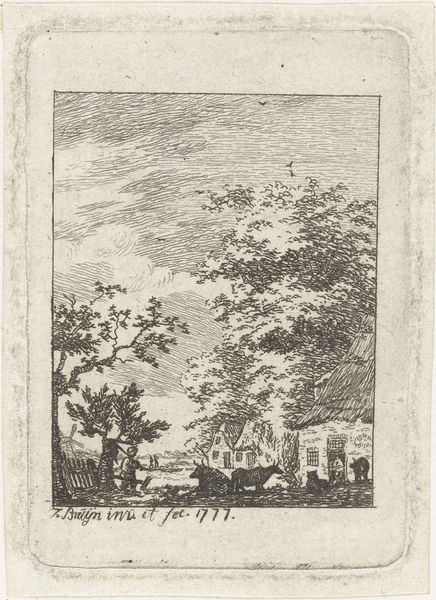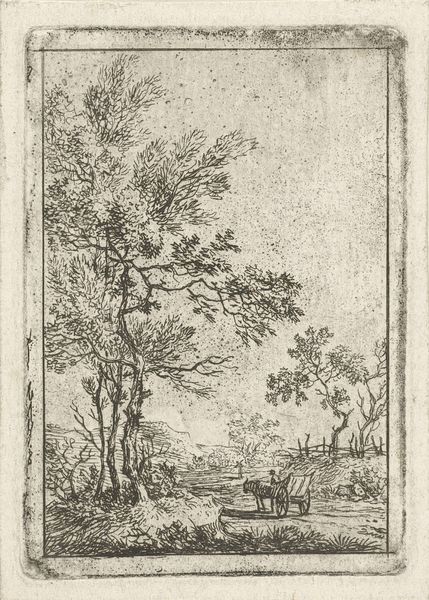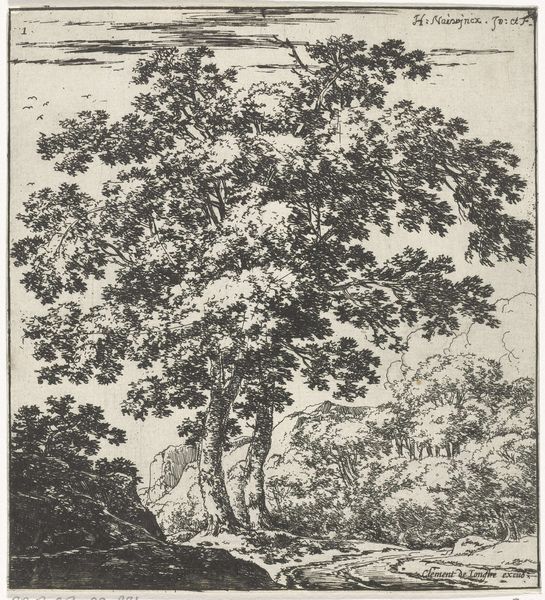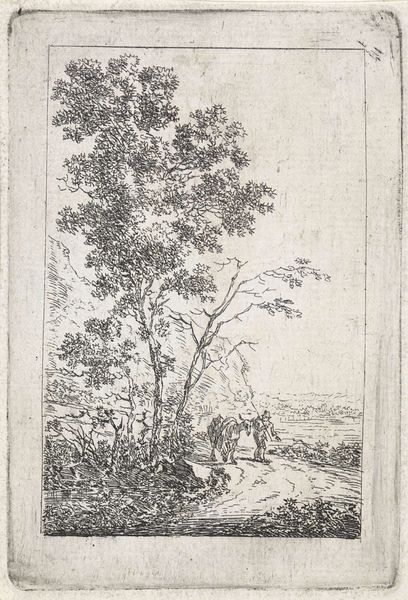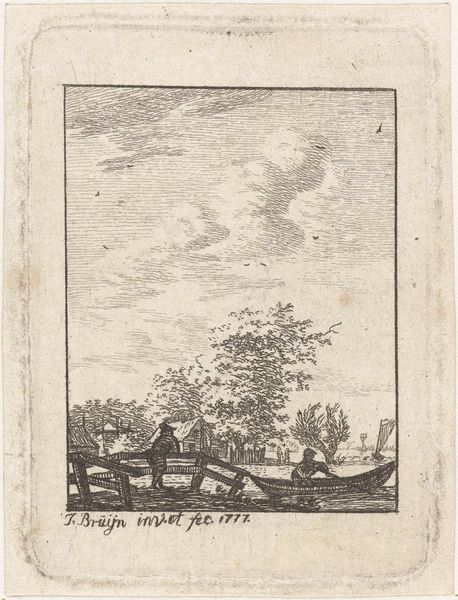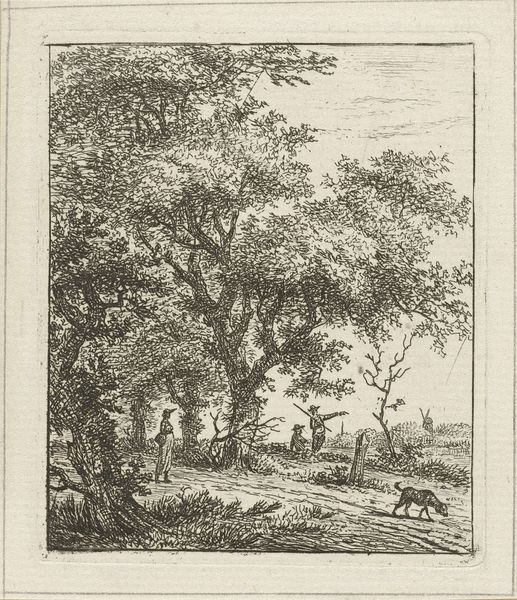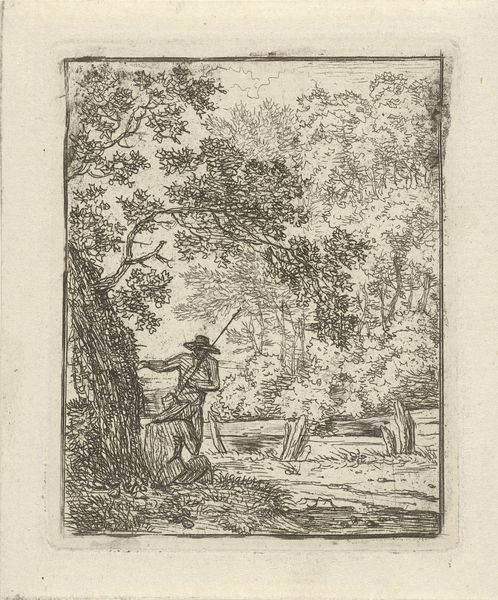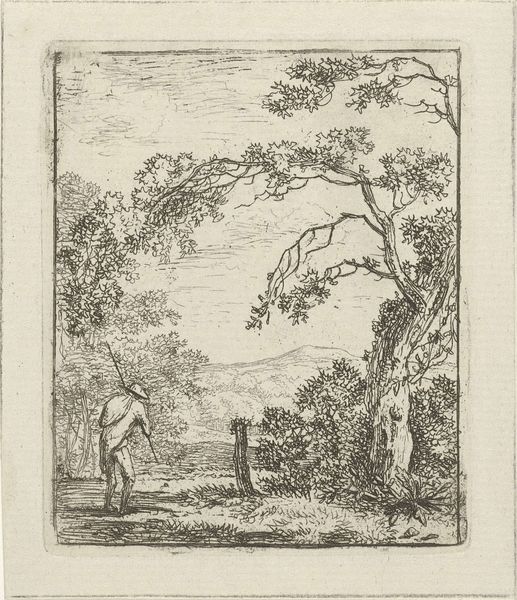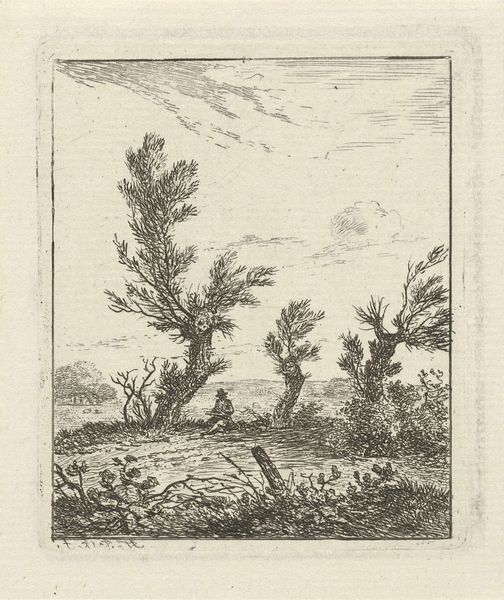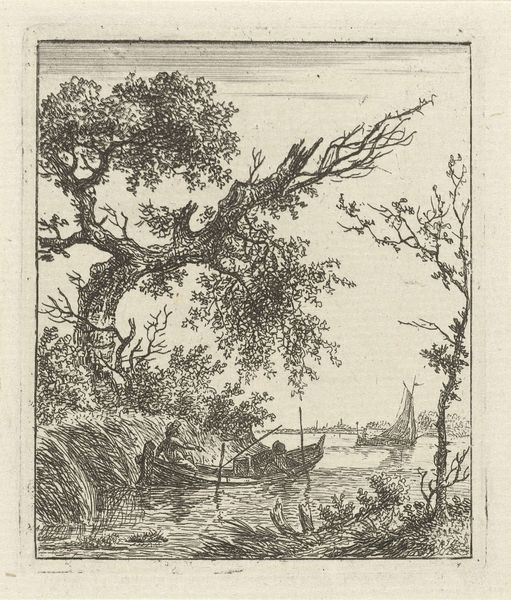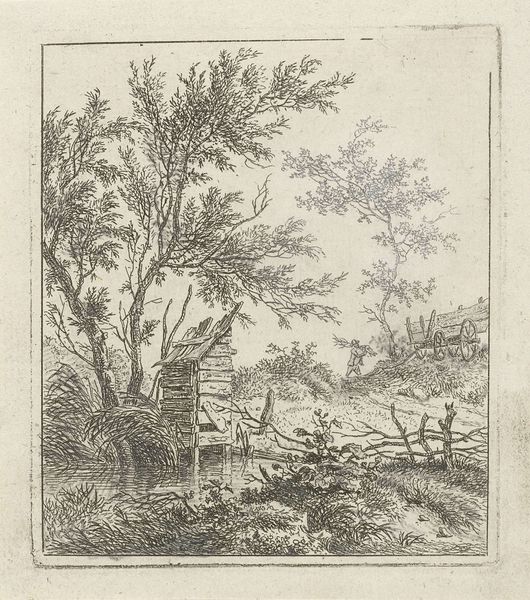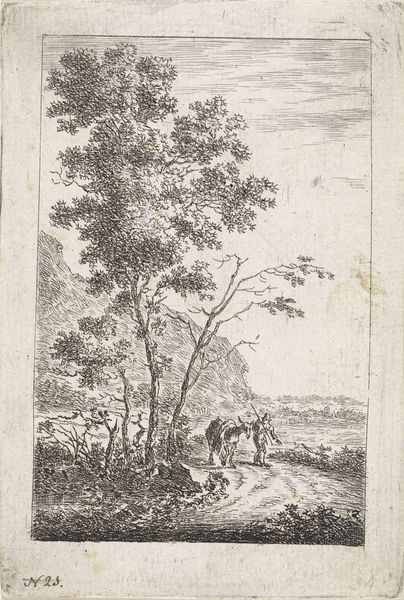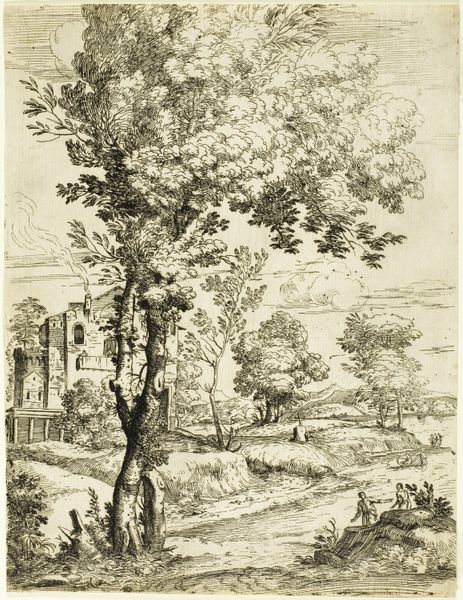
Dimensions: height 52 mm, width 37 mm
Copyright: Rijks Museum: Open Domain
Johanna de Bruyn created this landscape with rider in 1777 through etching, a printmaking technique that democratized image production. De Bruyn would have covered a metal plate with a waxy, acid-resistant ground, then scratched her design into the surface, exposing the metal. Immersing the plate in acid would bite away at these lines, creating grooves. Ink was then applied and the surface wiped clean, leaving ink only in the etched lines. Finally, the plate would be pressed onto paper, transferring the image. The fine, precise lines achieved through etching lend themselves well to the detailed depiction of the natural world. Yet, beyond mere representation, consider the labor involved in creating this image. Each line, each shadow, carefully considered and meticulously executed. Through the skilled application of craft, De Bruyn elevates a simple landscape to a work of art that speaks to the social and economic context of its time.
Comments
No comments
Be the first to comment and join the conversation on the ultimate creative platform.
